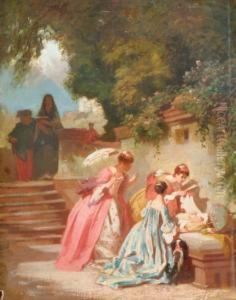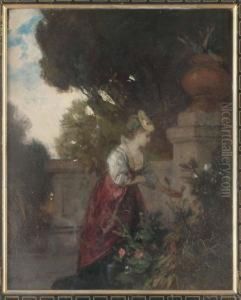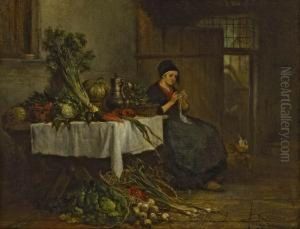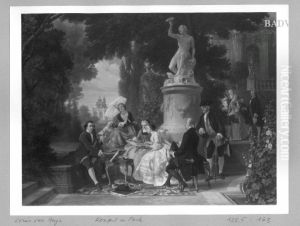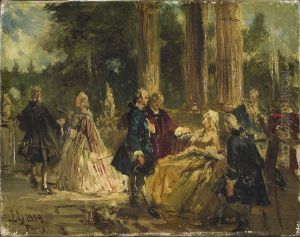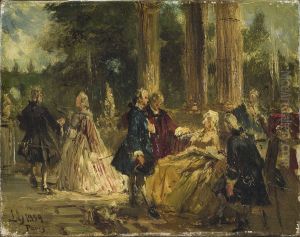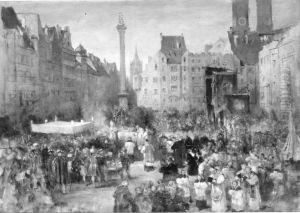Ludwig Von Hagn Paintings
Ludwig von Hagn was a German painter known for his detailed and expressive works, particularly his genre scenes and portraits. Born on January 19, 1819, in Munich, he was part of a creative environment in the Kingdom of Bavaria that encouraged artistic pursuits. His family was supportive of his artistic inclination, which allowed him to pursue his passion for the arts from a young age.
Von Hagn studied at the Royal Academy of Fine Arts in Munich, where he was influenced by the teachings of prominent artists such as Peter von Cornelius and Wilhelm von Kaulbach. He was also inspired by the works of the Old Masters, which is evident in his meticulous attention to detail and use of color in his paintings.
Throughout his career, Ludwig von Hagn focused on genre painting, capturing scenes of everyday life with a sense of realism and often imbuing them with a subtle narrative quality. He also excelled in portraiture, where his ability to depict the character and personality of his subjects was greatly admired. His works were characterized by their vibrant palette and the interplay of light and shadow, which added depth and realism to his compositions.
Von Hagn's art was well-received during his lifetime. He exhibited his works in various art shows, and his paintings were sought after by collectors and art lovers. Despite the changing artistic trends of the 19th century, von Hagn remained committed to his style and continued to produce works that were true to his vision and technique.
Ludwig von Hagn passed away on February 11, 1898, in Munich. His legacy is preserved in the collections of various museums and galleries, where his paintings continue to be appreciated for their craftsmanship and insight into 19th-century German society. While he may not be as widely known as some of his contemporaries, von Hagn's contribution to the German art scene of his time remains significant, and his works offer a valuable glimpse into the cultural and social milieu of his era.
